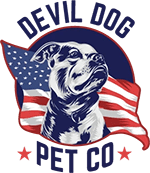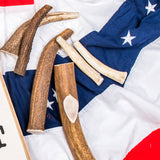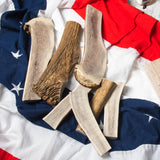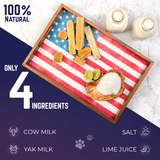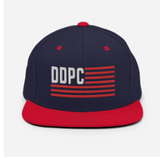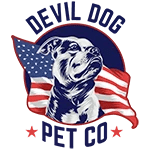Key Takeaways
- Dog album covers have been iconic in music history, featuring notable examples like Snoop Dogg's "Doggystyle" and Drake's "For All The Dogs."
- These covers use canine imagery to convey themes such as loyalty, rebellion, and nostalgia.
- Dog album art serves as a powerful form of visual storytelling that connects with listeners before they hear the music.
- The presence of dogs on album covers adds a unique artistic flair that enhances the overall appeal of the music.
Table of Contents
- The Enduring Legacy of Dogs in Album Cover Art
- Why Do Artists Choose Dogs? Symbolism, Branding, and Personal Stories
- The Iconic Dog Album Covers, Legends, Underdogs, and Standouts
- Dog Breeds & Characters on Covers, What Gets Chosen and Why
- Illustrated, Cartoon, and Surreal Dogs in Album Art
- Dog Album Cover Photography, Techniques, Tips, and Troubleshooting
- Balancing Humor, Mood, and Genre, Making the Dog Fit the Album's Vibe
- Legal Considerations, Copyright, Model Releases, and Buying Dog Images
- Dog Album Cover vs. Cat Album Cover, Trends, Audience, and Branding
- DIY vs. Professional Dog Album Covers, Which Approach Is Best for You?
The Ultimate Guide to Dog Album Covers: History, Design, Symbolism, and Creation
From Snoop Dogg's legendary "Doggystyle" to Drake's recent "For All The Dogs," canine companions have dominated album artwork for decades. A dog album cover transforms man's best friend into powerful visual storytelling, conveying loyalty, rebellion, nostalgia, or pure artistic flair that resonates with listeners before they hear a single note.
These covers aren't random creative choices. Artists strategically use dogs to communicate genre, personality, and emotional connection. Whether featuring their personal pets or carefully selected breeds, musicians understand that dogs trigger immediate emotional responses that enhance their brand and deepen fan relationships. Medium-sized dogs and large dogs are often chosen for their visual impact and the symbolism they bring to album art.
Dog lovers and musicians alike know that the right canine companion can inspire creativity and connection. If you're looking for ways to reward your own four-legged muse, consider exploring antler dog chews for a healthy, long-lasting treat that keeps your pup happy during those long studio sessions.
The Enduring Legacy of Dogs in Album Cover Art
Dog album covers emerged in the 1960s as artists began personalizing their imagery beyond standard portrait shots. The trend exploded in the 1970s with rock and folk musicians featuring their beloved pets, establishing a template that spans five decades and over 300 notable releases.
The evolution mirrors changing relationships between humans and dogs. Early covers showcased hunting breeds or working dogs, reflecting traditional roles. Modern album covers with dogs emphasize companionship, emotional support, and family bonds, particularly visible in hip-hop, indie, and alternative genres where authenticity drives fan connection.
| Era | Artist/Album | Dog Featured | Cultural Impact |
|---|---|---|---|
| 1970s | Rick Springfield - "Working Class Dog" | Jack Russell Terrier | Established pet-as-alter-ego concept |
| 1990s | Snoop Dogg - "Doggystyle" | Cartoon Doberman | Merged artist persona with canine imagery |
| 2000s | Blur - "Think Tank" | Greyhounds | Art-house approach to band photography |
| 2020s | Drake - "For All The Dogs" | Child's drawing | Personal storytelling through family art |
Why Do Artists Choose Dogs? Symbolism, Branding, and Personal Stories

Dogs symbolize universal concepts that transcend cultural boundaries: unwavering loyalty, protective instincts, playful energy, and unconditional love. Musicians leverage these associations to communicate their values without explicit messaging, creating instant emotional bridges with audiences.
The strategic power extends beyond symbolism. Personal dogs humanize larger-than-life artists, making them relatable and approachable. Rick Springfield's Jack Russell Terrier "Ziggy" became as recognizable as the musician himself, while indie artists regularly feature rescue dogs to align with socially conscious fan bases.
What Dogs Symbolize in Album Art
- Loyalty & Devotion: Folk, country, and heartland rock genres
- Rebellion & Edge: Punk, metal, and alternative scenes
- Authenticity & Realness: Hip-hop and rap artists
- Comfort & Nostalgia: Indie and singer-songwriter albums
- Playfulness & Humor: Pop and experimental music
Genre matching proves crucial for success. Aggressive breeds complement hard rock and metal, while gentle retrievers suit folk and acoustic albums. The visual-audio alignment creates cohesive artistic statements that strengthen overall brand messaging. For more insight into how dog behavior and personality influence these choices, check out why does my dog do that on our blog.
The Iconic Dog Album Covers, Legends, Underdogs, and Standouts
Certain dog album covers transcend music to become cultural touchstones. These images achieve iconic status through perfect alignment of visual impact, musical quality, and cultural timing, creating lasting impressions that define entire artistic careers.
The most memorable covers tell compelling backstories. Springfield's "Working Class Dog" featured his actual pet, creating authentic connection. Snoop Dogg's cartoon Doberman established his "Big Boss Dogg" persona while maintaining playful accessibility. More recent entries like Drake's child-drawn cover demonstrate how personal narratives enhance artistic authenticity.
| Album/Artist | Year | Dog Details | Cultural Impact |
|---|---|---|---|
| Rick Springfield - "Working Class Dog" | 1981 | Jack Russell Terrier "Ziggy" | First major hit to feature artist's personal pet |
| Snoop Dogg - "Doggystyle" | 1993 | Cartoon Doberman | Cemented dog imagery in hip-hop culture |
| Blur - "Think Tank" | 2003 | Racing Greyhounds | Elevated pet photography to fine art status |
| The Baha Men - "Who Let the Dogs Out" | 2000 | Pack of mixed breeds | Created global anthem connecting dogs to celebration |
| Drake - "For All The Dogs" | 2023 | Child's crayon drawing | Demonstrated raw authenticity over polish |
Contemporary artists continue pushing creative boundaries. Independent musicians increasingly feature rescue dogs, creating powerful narratives about second chances and redemption that resonate with socially conscious audiences. These covers often generate significant social media engagement, proving that authentic storytelling trumps expensive production values. If you're interested in supporting your own rescue or mixed breed, bully sticks are a great treat for dogs of all backgrounds.
Dog Breeds & Characters on Covers, What Gets Chosen and Why
Breed selection directly impacts album perception and target audience appeal. German Shepherds and Rottweilers project strength and protection, making them natural fits for rock and metal genres. Golden Retrievers and Labradors communicate warmth and accessibility, perfect for folk and country albums seeking broad demographic appeal.
Physical characteristics matter as much as breed stereotypes. Long-haired breeds photograph beautifully in motion, while short-coated dogs showcase muscle definition and intensity. Mixed breeds offer unique character that pure breeds can't match, their unpredictable features create memorable, one-of-a-kind imagery that stands out in crowded music markets.
Popular Album Cover Breeds by Genre
- Rock/Metal: German Shepherds, Pit Bulls, Rottweilers
- Hip-Hop: Dobermans, American Bulldogs, Mastiffs
- Folk/Country: Golden Retrievers, Border Collies, Beagles
- Indie/Alternative: Mixed breeds, rescue dogs, unusual breeds
- Pop: Small breeds, puppies, designer mixes
Smart artists consider their dog's individual personality over breed generalizations. A gentle Pit Bull can challenge stereotypes while supporting anti-discrimination messages. Conversely, an aggressive Chihuahua might create compelling visual irony that generates buzz and conversation. For more on breeds and their unique needs, read about 15 dog breeds prone to separation anxiety on our blog.
Illustrated, Cartoon, and Surreal Dogs in Album Art

Illustration liberates artists from photographic limitations, enabling impossible scenarios and exaggerated characteristics that pure photography cannot achieve. Cartoon dogs can embody human emotions more dramatically than real animals, while surreal approaches create dreamlike imagery that matches experimental music styles.
Digital art tools have democratized professional-quality illustration, allowing independent artists to create striking album cover dog imagery without expensive photo shoots. This accessibility has sparked creative renaissance in indie and electronic music scenes, where artistic freedom often trumps commercial polish. If your creative process is fueled by rewarding your dog, elk antlers are a natural chew that can keep your pup occupied while you work.
| Style | Best For | Notable Examples | Production Complexity |
|---|---|---|---|
| Realistic Illustration | Memorial albums, emotional storytelling | Various tribute albums | High |
| Cartoon/Comic | Hip-hop, pop, playful genres | Snoop Dogg discography | Medium |
| Abstract/Surreal | Experimental, electronic, art rock | Various indie releases | Variable |
| Digital Collage | Remix albums, compilation releases | Electronic music compilations | Low to Medium |
Modern trends favor hand-drawn aesthetics over digital perfection. Drake's choice to feature his son's crayon drawing exemplifies this movement toward authentic, imperfect artistry that feels genuine rather than manufactured. This approach resonates particularly well with younger audiences who value authenticity over technical precision.
Dog Album Cover Photography, Techniques, Tips, and Troubleshooting
Professional dog photography demands patience, preparation, and technical precision. Use 50mm lenses for natural perspective, shoot at the dog's eye level for emotional connection, and prioritize natural lighting over artificial flash. The key is capturing genuine expression rather than forced poses that look stiff or unnatural.
Successful shoots follow the same principles as working with any unpredictable subject: keep sessions short, use high-value treats, and allow the dog to relax between takes. If your dog is food-motivated, a favorite chew can help maintain focus and reward cooperation. Always plan for extra time, dogs, like musicians, rarely nail the perfect shot on the first try.
Balancing Humor, Mood, and Genre, Making the Dog Fit the Album's Vibe
The most successful dog album covers achieve perfect synergy between canine imagery and musical genre. A snarling pit bull works for punk rock but would sabotage a folk album's gentle accessibility. The key lies in matching your dog's expression, pose, and breed characteristics to your sound's emotional core.
Genre-specific approaches create instant recognition. Hip-hop covers favor confident, street-smart dogs in urban settings, think Snoop Dogg's laid-back bulldogs. Indie rock embraces quirky, imperfect moments that feel authentic rather than polished. Folk and acoustic genres benefit from warm, approachable dogs in natural settings that suggest comfort and storytelling. If you want your dog to stay focused during a photo shoot, long lasting dog chews can be a helpful reward.
The Three-Friend Test: Show your album cover with dog to three people unfamiliar with your music. If two can correctly guess your genre within 10 seconds, your visual-audio alignment is spot-on.
Color grading and post-processing can salvage mismatched moods. A playful golden retriever can appear more serious through desaturated colors and dramatic lighting. Conversely, brightening and warming the image transforms even a stoic German Shepherd into an approachable companion. The dog's natural expression provides the foundation, but digital tools shape the final emotional impact.
Legal Considerations, Copyright, Model Releases, and Buying Dog Images

Using someone else's dog photography without permission creates immediate copyright liability. Professional photographers retain rights to their images even when featuring your pet, unless you've negotiated a work-for-hire agreement. Stock photo sites like Shutterstock and Getty Images offer legally cleared dog images, but expect generic results that thousands of other artists can access.
Model releases become necessary when the dog is recognizable and the owner isn't you. While dogs can't sign contracts, their human guardians can object to commercial use of their pet's likeness. Document permissions in writing, especially for distinctive breeds or dogs with unique markings that make them identifiable.
Quick Legal Check: Can you prove you have rights to use every element in your dog album cover? If the answer isn't an immediate "yes," you're risking takedown notices from streaming platforms.
Commissioning original photography or illustration eliminates most legal headaches. Specify usage rights upfront, album covers, promotional materials, merchandise, and digital distribution should all be covered in your agreement. The upfront cost prevents expensive legal complications later when your music gains traction. For a deeper dive into the history and significance of album covers, see this comprehensive overview on Wikipedia.
Dog Album Cover vs. Cat Album Cover, Trends, Audience, and Branding
Dogs dominate album covers in rock, hip-hop, and country music, appearing roughly three times more frequently than cats across major releases since 2000. This preference reflects dogs' association with loyalty, energy, and pack mentality, values that resonate with these genres' themes of brotherhood, rebellion, and authenticity.
Cat album covers cluster heavily in indie, electronic, and alternative scenes where independence and mystery align with artistic personas. Cats signal sophistication and unpredictability, appealing to audiences who value artistic autonomy over mainstream accessibility. The choice between species immediately communicates your musical identity. For more inspiration and stories about dogs in pop culture, visit the devil dog blog.
| Aspect | Dog Album Covers | Cat Album Covers |
|---|---|---|
| Primary Genres | Rock, Hip-Hop, Country, Pop-Punk | Indie, Electronic, Alternative, Experimental |
| Emotional Appeal | Loyalty, Energy, Relatability | Mystery, Independence, Sophistication |
| Audience Demographics | Broader mainstream appeal | Niche, artistically-focused listeners |
| Marketing Advantage | Immediate emotional connection | Memorable uniqueness, viral potential |
Demographic data shows dog covers perform better with audiences over 25, while cat imagery resonates more strongly with younger, urban listeners. Consider your target demographic when choosing between species, the wrong animal can create an immediate disconnect with your intended audience. For additional context on the evolution of album cover art, check out this Smithsonian spotlight on album cover art.
DIY vs. Professional Dog Album Covers, Which Approach Is Best for You?
DIY approaches work best for indie artists with strong visual instincts, limited budgets under $500, and flexible release timelines. Modern smartphone cameras and apps like Canva democratize album cover creation, though results often lack the polish that catches attention in crowded digital stores. If you're looking for a treat to keep your dog entertained while you work on your next project, extra large Himalayan dog chews are a great option.
Professional designers justify their $250-$1500 fees through technical expertise and industry connections. They understand streaming platform requirements, color psychology, and how covers appear as tiny thumbnails on mobile devices. The investment becomes worthwhile when your music career generates revenue or when visual branding significantly impacts your success.
DIY Advantages:
- Complete creative control over timing and revisions
- Lower upfront costs, learning valuable skills
- Authentic personal connection with your pet
DIY Challenges:
- Time investment can exceed 20+ hours for quality results
- Technical limitations in lighting and composition
- Difficulty achieving professional polish without design experience
Frequently Asked Questions
What symbolism do dogs represent on album covers and why do artists choose them?
Dogs on album covers symbolize loyalty, rebellion, nostalgia, and companionship. Artists choose them because dogs evoke immediate emotional connections, reinforce personal stories, and enhance branding by visually communicating themes that resonate with listeners before the music even plays.
How have dog album covers evolved from the 1960s to the present day in music history?
Dog album covers began in the 1960s as personalized imagery beyond standard portraits and gained popularity in the 1970s with rock and folk artists featuring their pets. Over five decades, the trend expanded to include diverse artistic styles and genres, reflecting evolving human-dog relationships and using dogs as powerful storytelling tools in music culture.
What are some iconic examples of dog album covers and their cultural significance?
Notable dog album covers include Snoop Dogg's "Doggystyle" and Drake's "For All The Dogs." These covers have become cultural touchstones, using canine imagery to express themes like loyalty and rebellion while strengthening artist identity and fan connection through memorable visual storytelling.
What considerations go into selecting specific dog breeds or artistic styles for album cover art?
Artists select dog breeds and styles based on the emotional tone, genre, and personal significance they want to convey. Medium to large dogs are often chosen for visual impact and symbolism, while illustrated or surreal dogs can add humor or mood, ensuring the canine fits the album’s vibe and enhances the overall artistic message.
